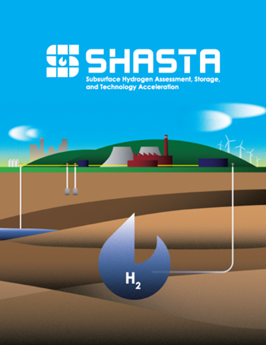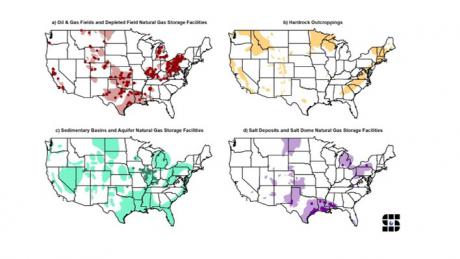WASHINGTON, D.C. — On Aug. 30, 2022, the U.S. Department of Energy’s (DOE) Office of Fossil Energy and Carbon Management (FECM) announced $6.4 million in funding for 18 projects to conduct early-stage research and development of decarbonization technologies and environmental remediation, and to develop strategies to enhance the engagement of minority-serving institutions on FECM-related research at eligible U.S. colleges and universities.
WASHINGTON, D.C.— The U.S. Department of Energy’s (DOE) Office of Fossil Energy and Carbon Management (FECM) released a Request for Information (RFI) on Aug. 25, 2022, on the characterization, treatment and cleaning, and management of effluent waters from oil and natural gas development and production, along with legacy wastewaters associated with thermal power generation.Water is critical to almost every phase of fossil energy operations — from resource extraction, transport, and processing to power generation.
The U.S. Department of Energy’s (DOE) Subsurface Hydrogen Assessment, Storage and Technology Acceleration (SHASTA) collaboration, a project designed to use unique capabilities and expertise of key national laboratories to determine the viability, safety, and reliability of storing hydrogen in subsurface environments, has added Sandia National Laboratories as its fourth research partner.
WASHINGTON, D.C.— The U.S. Department of Energy (DOE) recently announced the award of $28.9 million to 15 industry- and university-led projects and a new $32 million funding opportunity for research that will advance cutting-edge clean hydrogen technology solutions. The funding will support clean hydrogen uses for a more available and affordable fuel for electricity generation, industrial decarbonization, and transportation fuel.
Safe large-scale geological hydrogen storage is important in the national drive to use hydrogen to attain net-zero carbon emission goals by 2050. Conclusive research to determine the effect of gas injections on the naturally occurring underground microbial community and geochemical reactions between hydrogen and rock mineralogy are critical research subjects in that effort.
WASHINGTON, D.C. — The U.S. Department of Energy’s (DOE) Office of Fossil Energy and Carbon Management (FECM) today announced more than $31 million in funding for 10 projects to develop carbon capture technologies capable of capturing at least 95 percent of carbon dioxide (CO2) emissions generated from natural gas power plants, waste-to-energy power plants, and industrial applications, including cement and steel.
The latest developments in sensor technologies and their applications to the power sector and other fields were the highlight of the Infrastructure Sensing Collaboration Workshop held Aug. 24-25 for research leaders at NETL and its partners with the University of Pittsburgh.
A cutting-edge optical fiber sensor technology developed by the University of Pittsburgh and NETL that provides unprecedented measurement capabilities in environments previously thought impossible to probe has earned a 2022 R&D 100 Award.
The U.S. Department of Energy’s (DOE) Office of Fossil Energy and Carbon Management (FECM) has selected a clean energy technology company for developing a first-of-its-kind tool that will use science-based machine learning and data analytics to visualize key subsurface features and quickly and accurately reveal how the subsurface behaves.
Underground storage of hydrogen is a key research area associated with NETL’s overall contribution to the U.S. Department of Energy’s (DOE) Hydrogen Shot.














